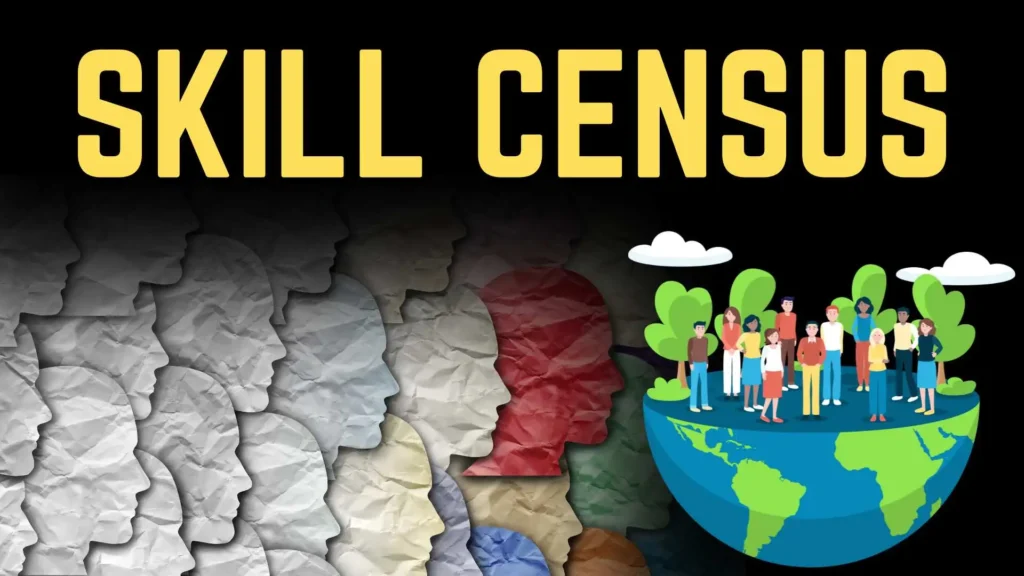Skill Census – GD Topic with Solution
Skill Census GD Topic
In an era where economies are driven by knowledge, the concept of a “Skill Census” has emerged as a crucial tool for organizations and governments. This practice involves the systematic assessment of the skills available within a workforce, enabling strategic planning for future growth, competitiveness, and innovation. As industries evolve and technology advances, having a clear picture of the skills that workers possess becomes essential for addressing gaps, fostering talent, and preparing for the challenges of tomorrow.

What is a Skill Census?
A Skill Census refers to the detailed evaluation and collection of data on the skills and competencies present within a specific workforce. It helps organizations and governments understand the types of skills employees or job seekers currently have, identify skills shortages, and predict future needs. Essentially, it’s a structured survey or audit that gauges the breadth and depth of skills across various sectors or job roles.
Unlike traditional assessments that focus solely on qualifications or experience, a skill census dives deeper into practical capabilities and emerging competencies. It provides insights into areas such as technical proficiency, soft skills, leadership potential, and adaptability to new technologies.
Skill Census in India
Several states and regions across India are recognizing the importance of conducting skill censuses to bridge the gap between workforce capabilities and industry demands. A recent example is Andhra Pradesh’s Skill Census-2024, which is set to be a pioneering initiative in mapping the skills and competencies of the state’s population. Launched under the direction of Chief Minister N. Chandrababu Naidu and executed by the A.P. State Skill Development Corporation (APSSDC), this effort aims to identify skill gaps, inform policy decisions, and empower individuals through targeted training programs. The census will assess the existing workforce, demographic trends, and specific industry needs across sectors like manufacturing, construction, and services. The overarching goal is to create a data-driven strategy that ensures the state’s education and training initiatives are aligned with market demands.
Other Indian states, such as Maharashtra and Karnataka, have also undertaken similar initiatives. In Maharashtra, the Maharashtra Skill Development Mission launched a comprehensive assessment of workforce capabilities in 2022. The data collected informed new policies and training initiatives to enhance youth employability in IT and industrial sectors. Similarly, Karnataka’s Skill Gap Analysis conducted in collaboration with the National Skill Development Corporation (NSDC) highlighted critical areas in tech and healthcare sectors, resulting in revamped training programs to address these deficits. Such examples underline the growing emphasis across India on understanding workforce needs, driving economic growth, and fostering employability through informed skill development strategies.
Importance of Skill Census in the Modern Economy
With globalization, automation, and artificial intelligence reshaping industries, the relevance of certain skills changes rapidly. A skill census plays a critical role in managing this change. Here’s why it’s increasingly important:
- Workforce Development: By understanding the skills available in the workforce, businesses and governments can target areas for training and development. This enables organizations to stay competitive by ensuring their employees possess the skills needed to adapt to new technologies or shifts in industry demand.
- Addressing Skills Gaps: A skill census helps identify gaps between current capabilities and future needs. This allows for strategic hiring, training, and development initiatives aimed at filling these gaps before they become critical problems.
- Economic Growth and Innovation: Nations and organizations can foster innovation by aligning workforce skills with economic opportunities. A skill census helps drive investments in education, reskilling, and upskilling that fuel long-term growth.
- Strategic Decision-Making: Governments can use skill census data to inform public policy, education reforms, and economic strategies. Businesses can make data-driven decisions on recruitment, talent management, and resource allocation.
How is a Skill Census Conducted?
The process of conducting a skill census typically involves several steps to ensure the data collected is both accurate and actionable. Here’s an overview of the key stages:
- Survey Design: The first step is to design a survey or assessment that accurately reflects the competencies required in different roles. This includes both technical skills (such as coding, engineering, or data analysis) and soft skills (such as communication, teamwork, and problem-solving).
- Data Collection: This stage involves gathering responses from employees, job seekers, or even students. Data collection can be done through online surveys, interviews, or direct assessments. Ensuring a high response rate is essential to obtain representative data.
- Data Analysis: After collecting data, it’s analyzed to identify trends, strengths, and weaknesses within the workforce. Advanced analytics tools and AI-driven platforms are increasingly being used to process large volumes of data, offering insights that were previously difficult to obtain.
- Reporting: Once the data has been analyzed, the results are compiled into reports that highlight key findings, such as skills shortages, over-saturation in certain areas, or emerging skills that are critical for future growth.
- Action Plan Development: The final step involves translating the insights from the skill census into actionable strategies. This could involve the creation of targeted training programs, changes in hiring practices, or strategic partnerships with educational institutions.
Key Benefits of Skill Census for Organizations
For businesses, conducting a skill census offers numerous benefits that can lead to a more resilient and adaptable workforce. Here are some of the primary advantages:
- Enhanced Talent Management: A skill census provides businesses with a clear understanding of their current workforce capabilities. This helps in better talent management, from identifying high-potential employees to offering targeted career development opportunities.
- Informed Training Investments: Instead of investing in generic training programs, businesses can tailor their training initiatives based on the specific needs identified through the skill census. This leads to more effective and efficient use of training budgets.
- Succession Planning: By identifying employees with leadership potential or those with critical technical skills, organizations can create succession plans that ensure smooth transitions when key staff members retire or leave the company.
- Competitive Advantage: In a rapidly changing market, organizations that have a clear understanding of their workforce’s capabilities are better positioned to respond to new opportunities and challenges, giving them a competitive edge.
Challenges in Implementing a Skill Census
While the benefits of a skill census are clear, there are also several challenges associated with implementing such an initiative:
- Data Accuracy: Gathering accurate data on skills can be difficult, especially when dealing with large or diverse workforces. Self-reported data may not always reflect true capabilities, leading to skewed results.
- Employee Participation: Getting employees to engage in a skill census can be challenging, particularly if they’re concerned about how the results might be used. Ensuring anonymity and emphasizing the benefits of the census for career development can help alleviate these concerns.
- Changing Skills Landscape: The rapid pace of technological change means that the skills required today might not be the same as those needed tomorrow. A skill census needs to be conducted regularly to remain relevant and useful.
- Resource Intensive: Conducting a thorough skill census can be a time-consuming and resource-intensive process, especially for large organizations. It requires careful planning, execution, and follow-up to be effective.
The Future of Skill Census
As the global workforce continues to evolve, the role of the skill census will become even more critical. With the advent of big data analytics, artificial intelligence, and machine learning, skill censuses will become more sophisticated, allowing for real-time analysis of workforce capabilities and trends. Moreover, as the gig economy and remote work become more prominent, skill censuses will need to adapt to account for more flexible and diverse working arrangements.
In the coming years, we can expect skill censuses to be an integral part of organizational strategy, used not only to assess current capabilities but also to predict future trends and align workforce development with long-term business objectives.
Conclusion
The skill census is a powerful tool that can help businesses and governments navigate the complex and ever-changing landscape of workforce capabilities. By identifying skills gaps, fostering talent development, and making data-driven decisions, organizations can enhance their competitiveness and ensure their workforce is prepared for the future. As technology and industries evolve, the importance of regularly conducting a skill census will only grow, making it a key component of strategic planning in the modern economy.
Must Explore





